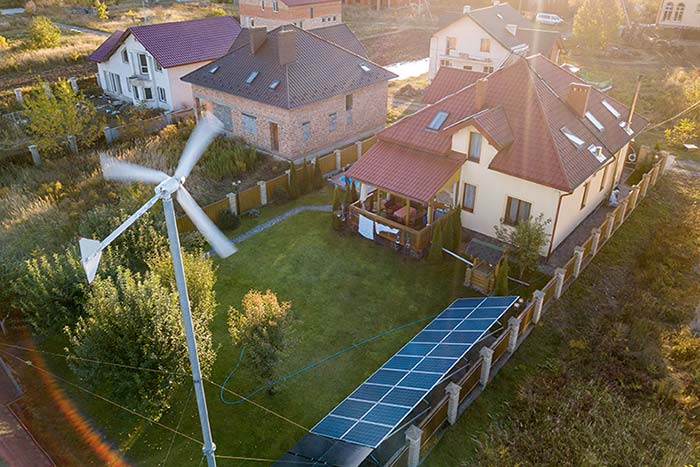
In today's environmentally conscious world, waste reduction and conservation have become essential practices for sustainable living. By implementing these 11 key practices, individuals can actively contribute to a greener future.
From adopting eco-friendly habits to utilizing renewable resources, this article explores practical strategies for minimizing waste and preserving our natural resources.
Whether you are a homeowner, a business owner, or simply someone who desires a more sustainable lifestyle, this guide offers valuable insights and tips for making a positive impact on the environment.
Eco-Friendly Practices
Eco-friendly practices are essential in achieving waste reduction and conservation for sustainable living.
One key practice is adopting green transportation methods. By choosing to walk, bike, or use public transportation instead of driving a car, individuals can significantly reduce their carbon footprint and contribute to a cleaner environment.
Additionally, sustainable fashion is another crucial aspect of eco-friendly practices. This involves purchasing clothing made from sustainable materials, such as organic cotton or recycled fabrics, and supporting brands that prioritize ethical manufacturing processes. By embracing sustainable fashion, individuals can reduce the environmental impact of the fashion industry, which is known for its excessive waste and pollution.
Incorporating these eco-friendly practices into our daily lives is a practical way to contribute towards a greener, more sustainable future.

Green Lifestyle
To lead a green lifestyle, it is important to adopt eco-friendly habits and make sustainable choices.
By incorporating practices such as reducing waste, conserving energy, and choosing renewable resources, individuals can contribute to a more sustainable future.
Simple tips like using reusable bags, composting organic waste, and opting for public transportation can make a significant difference in minimizing our environmental impact.
Eco-Friendly Habits
Adopting sustainable habits is vital for individuals who strive to contribute to waste reduction and conservation efforts. By incorporating eco-friendly practices into our daily lives, we can make a significant impact on the environment.
Here are five practical tips to help you lead a green lifestyle:
- Choose eco-friendly products: Opt for products made from sustainable materials and those that have minimal impact on the environment.
- Embrace sustainable fashion: Support brands that prioritize ethical and sustainable practices, such as using organic fabrics and reducing waste in the production process.
- Reduce, reuse, recycle: Practice the three R's to minimize waste and conserve resources.
- Conserve energy: Turn off lights when not in use, unplug electronics, and use energy-efficient appliances to reduce your carbon footprint.
- Practice mindful consumption: Buy only what you need and avoid excessive consumerism, which leads to unnecessary waste.
Incorporating these habits into our lives empowers us to make conscious choices that promote a sustainable future while enjoying the freedom of living in harmony with nature.
Sustainable Choices
Incorporating sustainable choices into our daily lives is essential for promoting a green lifestyle and contributing to waste reduction and conservation efforts.

Two key areas where we can make sustainable choices are in fashion and transportation.
Ethical fashion is becoming increasingly popular, as consumers are now more aware of the negative environmental and social impacts of fast fashion. By choosing ethical fashion brands that prioritize sustainable materials, fair labor practices, and ethical production processes, we can support a more sustainable and responsible industry.
Additionally, opting for sustainable transportation options, such as walking, cycling, or using public transportation, can significantly reduce our carbon footprint. These choices not only help to conserve natural resources and reduce pollution but also promote a healthier and more sustainable lifestyle.
Green Living Tips
One effective approach to embracing a green lifestyle is by implementing practical green living tips. Here are some simple yet impactful ways to incorporate sustainability into your daily life:
- Choose eco-friendly cleaning products: Opt for natural, non-toxic cleaners to reduce the use of harmful chemicals in your home.
- Practice energy conservation: Turn off lights and appliances when not in use, and consider investing in energy-efficient appliances to reduce your carbon footprint.
- Embrace sustainable fashion: Support brands that prioritize ethical production and use sustainable materials. Buy fewer but higher-quality clothing items that will last longer.
- Reduce water waste: Fix leaking faucets, take shorter showers, and collect rainwater for gardening to conserve water resources.
- Reduce, reuse, recycle: Adopt a zero-waste mindset by reducing single-use items, reusing items whenever possible, and recycling properly.
Conservation Strategies
Implementing effective conservation strategies is essential for reducing waste and promoting sustainable living. Conservation practices aim to minimize resource consumption and maximize efficiency, contributing to a healthier environment and a more sustainable future.
Waste management techniques play a crucial role in these strategies, ensuring that waste is properly managed, recycled, and disposed of in an environmentally responsible manner. By implementing conservation practices such as reducing, reusing, and recycling, individuals can significantly decrease the amount of waste generated and conserve valuable resources.
Additionally, strategies like composting organic waste and adopting energy-efficient practices can further contribute to waste reduction and conservation efforts. It is important for individuals and communities to actively engage in these conservation strategies to create a more sustainable and environmentally-friendly world.

Environmental Responsibility
To ensure environmental responsibility, individuals and communities must actively engage in the practice of minimizing waste and maximizing resource efficiency. This includes adopting ethical manufacturing practices and reducing carbon footprint.
Here are some practical measures that can be taken towards environmental responsibility:
- Embrace renewable energy sources and reduce dependency on fossil fuels
- Promote sustainable transportation options such as walking, biking, and public transportation
- Implement recycling programs to reduce waste and encourage responsible disposal
- Support local and organic food production to minimize the environmental impact of agriculture
- Advocate for stricter regulations and policies that promote sustainable practices in industries
Sustainability Tips
When it comes to sustainable living, there are several key practices that can help reduce waste and promote conservation.
One important tip is to use energy-efficient appliances, which can significantly reduce electricity consumption.
Additionally, implementing water conservation strategies, such as fixing leaks and using low-flow fixtures, can help conserve this valuable resource.
Lastly, adopting waste reduction methods like recycling, composting, and minimizing single-use items can contribute to a more sustainable lifestyle.
Energy-Efficient Appliances
How can we maximize energy efficiency in our appliances to promote sustainable living?

Here are five energy-saving practices that can help reduce our carbon footprint:
- Choose ENERGY STAR certified appliances: These appliances are designed to consume less energy without compromising on performance. By choosing ENERGY STAR certified products, we can significantly reduce our energy consumption.
- Unplug appliances when not in use: Many appliances continue to use energy even when they are not actively being used. Unplugging them when not in use can help save energy and reduce our carbon emissions.
- Opt for energy-efficient cooking methods: Using energy-efficient cooking appliances, such as induction cooktops or slow cookers, can help save energy and reduce our overall carbon footprint.
- Maintain and clean appliances regularly: Regular maintenance and cleaning of appliances can ensure that they operate at their optimal efficiency, reducing energy waste.
- Invest in smart appliances: Smart appliances offer features like energy monitoring and remote control, allowing us to optimize energy usage and reduce waste.
Water Conservation Strategies
Water conservation strategies are essential for sustainable living and can be implemented by incorporating efficient water usage practices into our daily routines.
Two effective strategies for conserving water are rainwater harvesting and drip irrigation.
Rainwater harvesting involves collecting rainwater and storing it for later use. This can be done by using rain barrels or cisterns to capture rainwater from rooftops. The collected water can then be used for activities such as watering plants, washing cars, or flushing toilets.
Drip irrigation, on the other hand, is a method of delivering water directly to the roots of plants, minimizing water waste through evaporation or runoff. By using a network of tubes or pipes with small holes or emitters, water is slowly and precisely delivered to the plants, promoting healthy growth while reducing water consumption.
Waste Reduction Methods
To effectively reduce waste and promote sustainable living, implementing waste reduction methods is crucial. Here are five practical waste reduction practices and recycling initiatives that can make a significant impact on the environment:
- Source Reduction: Minimize waste generation by choosing products with less packaging and avoiding single-use items.
- Recycling: Separate recyclable materials from non-recyclable ones and ensure they are properly disposed of in designated recycling bins.
- Composting: Turn organic waste, such as food scraps and yard trimmings, into nutrient-rich compost for gardening.
- Upcycling: Give new life to old items by repurposing or transforming them into something useful and creative.
- Donation and Reuse: Instead of throwing away unwanted items, donate them to charities or find ways to reuse them.
Waste Reduction Techniques
One effective method for waste reduction is through the implementation of proper recycling practices. Recycling is an essential waste reduction technique that involves converting used materials into new products, reducing the need for raw materials and energy consumption. By recycling items such as paper, plastic, glass, and metal, we can minimize the amount of waste that ends up in landfills and conserve valuable resources.

Another waste reduction technique is composting, which involves decomposing organic waste, such as food scraps and yard trimmings, to create nutrient-rich soil amendments. This helps divert waste from landfills while also providing a sustainable choice for gardening and farming.
Additionally, practicing source reduction by avoiding excessive packaging and choosing products with minimal packaging can greatly contribute to waste reduction efforts. By adopting these waste reduction techniques, we can make sustainable choices and contribute to a healthier environment.
Embracing Minimalism
Embracing minimalism offers numerous benefits, both for individuals and the environment. By adopting a minimalist lifestyle, people can reduce clutter, simplify their lives, and focus on what truly matters.
Practical tips for minimalism include decluttering, minimizing possessions, and prioritizing experiences over material possessions.
Embracing minimalism can also have a positive environmental impact by reducing consumption, waste generation, and carbon footprint.
Benefits of Minimalism
The benefits of minimalism can be observed through its promotion of a more sustainable and mindful lifestyle. Embracing minimalism offers a range of advantages that resonate with individuals seeking freedom and a sense of purpose. Consider the following benefits:
- Reduced stress and anxiety: By decluttering and simplifying our surroundings, we create a peaceful environment that promotes relaxation and mental well-being.
- Financial freedom: Minimalism encourages mindful consumerism, allowing us to save money, reduce debt, and prioritize experiences over material possessions.
- Environmental impact: Embracing minimalism reduces our carbon footprint by consuming less and embracing sustainable alternatives.
- Increased focus and productivity: With fewer distractions and obligations, we can focus on what truly matters, leading to higher levels of productivity and success.
- Enhanced relationships: By prioritizing meaningful connections and experiences, minimalism fosters stronger relationships and deeper connections with loved ones.
Through the benefits of simplicity and mindful consumerism, minimalism empowers individuals to live more intentionally and find freedom in a life less burdened by excess.

Practical Minimalism Tips
To effectively implement minimalism in daily life, it is important to adopt practical tips that promote a more intentional and sustainable lifestyle.
Living simply is at the core of minimalism, and one way to achieve this is through decluttering. Start by evaluating your belongings and identifying items that no longer serve a purpose or bring you joy. Donate or sell these items to reduce waste and create more space.
Another tip is to establish a shopping ban or limit your purchases to essential items only. This helps to prevent unnecessary accumulation of possessions and encourages mindful consumption.
Additionally, embrace the concept of quality over quantity by investing in long-lasting and durable products.
Minimalism for Environmental Impact
In the pursuit of sustainable living, minimalism plays a crucial role in minimizing environmental impact. Embracing minimalism not only helps reduce waste but also promotes a sense of freedom and simplicity. Here are five ways in which minimalism can have a positive environmental impact:
- Ethical Fashion: By adopting a minimalist approach to our wardrobe, we can prioritize quality over quantity and choose ethically produced clothing items that have a lower environmental footprint.
- Sustainable Transportation: Embracing minimalism also means reducing our reliance on cars and embracing sustainable transportation options such as walking, cycling, or using public transportation.
- Reduced Energy Consumption: A minimalist lifestyle encourages us to declutter our living spaces, which in turn reduces the need for excessive lighting, heating, and cooling, leading to lower energy consumption.
- Less Packaging Waste: By avoiding unnecessary purchases and opting for products with minimal packaging, we can significantly reduce the amount of waste generated.
- Mindful Consumption: Minimalism encourages us to be mindful of our consumption habits, helping us make conscious choices about the products we buy and their environmental impact.
Utilizing Renewable Resources
By harnessing the power of renewable resources, sustainable living practices can significantly reduce waste and promote conservation. Utilizing renewable energy sources is an essential aspect of sustainable living.
Renewable energy sources, such as solar and wind power, provide clean and abundant energy without depleting finite resources or producing harmful emissions. Incorporating these energy sources into daily life can help decrease dependence on fossil fuels and reduce carbon footprint.

Sustainable farming practices also play a crucial role in utilizing renewable resources. Practices like organic farming, crop rotation, and agroforestry promote soil health, biodiversity, and water conservation.
Composting Benefits
The utilization of composting offers numerous benefits for waste reduction and conservation in sustainable living practices. Composting is a natural process that transforms organic waste materials into nutrient-rich soil amendment.
Here are five compelling reasons to incorporate composting techniques and composting materials into your daily life:
- Reduces landfill waste: Composting diverts organic waste from landfills, where it would otherwise release harmful greenhouse gases.
- Improves soil quality: Compost enriches soil by providing essential nutrients, improving water retention, and promoting beneficial microbial activity.
- Reduces the need for chemical fertilizers: Compost naturally enhances soil fertility, reducing the reliance on synthetic fertilizers that can harm the environment.
- Saves money: By producing your own compost, you can reduce the need to purchase expensive commercial fertilizers and soil amendments.
- Supports a circular economy: Composting closes the loop by returning organic waste back to the earth, creating a sustainable and self-sufficient system.
Organic Gardening Methods
To effectively implement organic gardening methods, it is essential to prioritize sustainable practices that promote soil health and biodiversity. One key aspect of organic gardening is using natural pest control methods. Instead of relying on harmful chemical pesticides, organic gardeners use natural alternatives such as insect-repelling plants, insect traps, and beneficial insects like ladybugs and praying mantises. These methods not only protect the crops from pests but also minimize the negative impact on the environment.
Another important practice in organic gardening is companion planting. This involves planting different species together that have mutually beneficial relationships. For example, planting marigolds alongside tomatoes can help deter harmful insects while attracting pollinators. Similarly, growing beans near corn can provide nitrogen to the soil, benefiting both plants. Companion planting enhances biodiversity in the garden, leading to healthier plants and increased resistance to pests and diseases.
Ethical Consumption Choices
One key aspect of sustainable living is making ethical consumption choices that prioritize environmental conservation and waste reduction. Here are five ethical consumption choices that can make a significant impact on the environment:
- Choose ethical fashion: Support brands that prioritize fair labor practices, use sustainable materials, and promote a circular economy.
- Opt for sustainable packaging: Look for products that use minimal packaging or packaging made from recycled materials. Avoid single-use plastics whenever possible.
- Buy local and seasonal: Support local farmers and reduce carbon emissions by choosing locally produced food that is in season.
- Reduce meat consumption: The meat industry is a significant contributor to greenhouse gas emissions. Opt for plant-based alternatives or choose meat from sustainable sources.
- Minimize food waste: Plan meals, store food properly, and compost leftovers to minimize food waste and reduce methane emissions.
Frequently Asked Questions
What Are Some Examples of Eco-Friendly Practices That Can Be Implemented in Everyday Life?
Eco-friendly practices and sustainable choices can be easily incorporated into everyday life. By reducing waste and conserving resources, individuals can make a positive impact on the environment and promote a more sustainable future.

How Can Individuals Embrace a Green Lifestyle and Make Sustainable Choices?
Individuals can embrace a green lifestyle and make sustainable choices by adopting eco-conscious habits and making green living choices. This involves reducing waste, conserving resources, and prioritizing practices that have a minimal impact on the environment.
What Are Some Conservation Strategies That Can Be Employed to Protect the Environment?
Conservation strategies play a crucial role in environmental protection. By implementing practices such as energy efficiency, water conservation, and sustainable agriculture, individuals can contribute to the preservation of natural resources and the overall well-being of the planet.
What Does It Mean to Have Environmental Responsibility, and How Can It Be Practiced?
Environmental responsibility refers to the duty individuals and organizations have to protect and preserve the environment. It can be practiced through actions for sustainability such as reducing waste, conserving resources, and promoting eco-friendly practices.
What Are Some Tips for Living a Sustainable Life and Reducing Waste?
In order to live a sustainable life and reduce waste, it is important to implement various tips and practices. These may include reducing consumption, recycling, composting, conserving energy and water, and supporting local and sustainable businesses.
 Family Craft ProjectsHome ImprovementCooking and BakingReuse and RecycleDIY GiftsEco-Friendly ProjectsDIY Home SolutionsSeasonal ActivitiesFun and GamesLearn TogetherPrivacy PolicyTerms And Conditions
Family Craft ProjectsHome ImprovementCooking and BakingReuse and RecycleDIY GiftsEco-Friendly ProjectsDIY Home SolutionsSeasonal ActivitiesFun and GamesLearn TogetherPrivacy PolicyTerms And Conditions

 Family Craft ProjectsHome ImprovementCooking and BakingReuse and RecycleDIY GiftsEco-Friendly ProjectsDIY Home SolutionsSeasonal ActivitiesFun and GamesLearn TogetherPrivacy PolicyTerms And Conditions
Family Craft ProjectsHome ImprovementCooking and BakingReuse and RecycleDIY GiftsEco-Friendly ProjectsDIY Home SolutionsSeasonal ActivitiesFun and GamesLearn TogetherPrivacy PolicyTerms And Conditions
